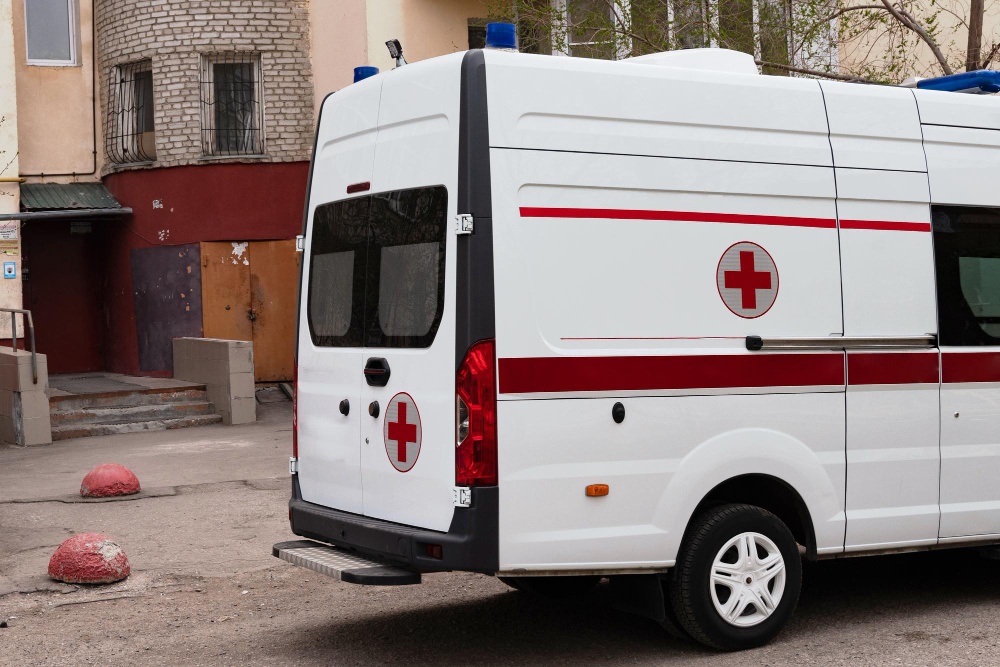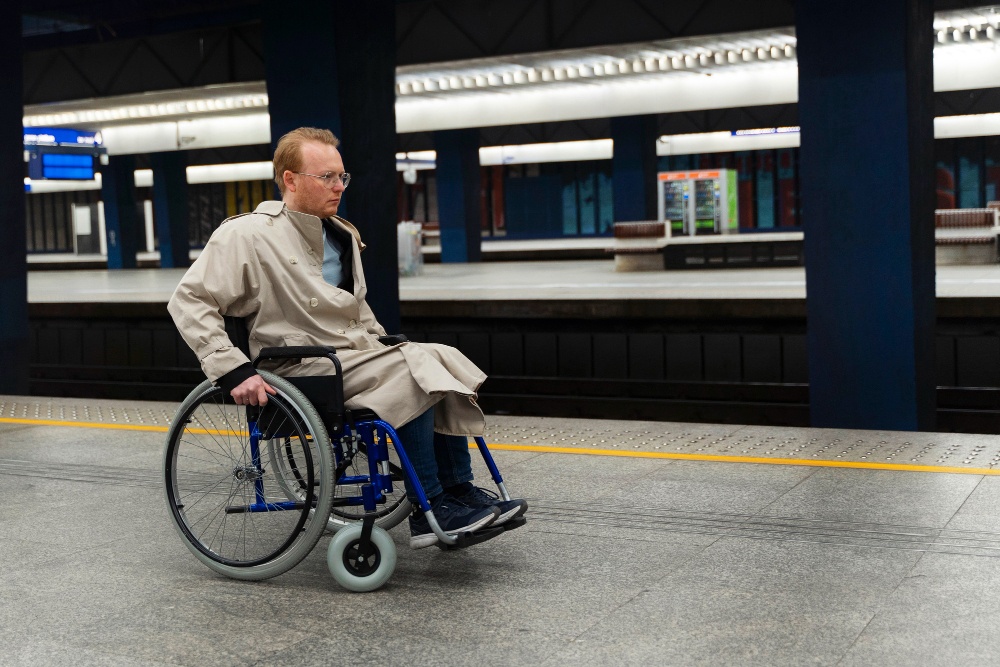Non-Emergency Medical Transportation During and Post-COVID-19: Adapting to New Norms
The COVID-19 pandemic has reshaped nearly every aspect of our daily lives, including how we access h...
Created by: Daniel Ogunsemowo /
Vetted by:
Otse Amorighoye

The COVID-19 pandemic has reshaped nearly every aspect of our daily lives, including how we access healthcare services. From postponed appointments to disruptions in transportation, the pandemic highlighted significant gaps in healthcare access. Now, as we adjust to a post-pandemic world, non-emergency medical transportation (NEMT) has emerged as a critical bridge, ensuring that people without personal transport options can still access essential medical services.
With demand for NEMT services surging during the pandemic and showing no signs of slowing, there’s a renewed focus on the importance of safe, accessible, and reliable medical transportation options. For many, NEMT services serve as a lifeline, not only for getting to and from routine appointments but also for facilitating critical health monitoring, treatment, and preventative care.
Understanding how NEMT has adapted and continues to evolve in this new healthcare landscape can empower individuals and healthcare providers alike to make informed transportation choices. NEMT providers like DreamCareRides are implementing innovative solutions, from enhanced safety protocols to flexible service models, ensuring that every ride is as safe and dependable as possible.
Whether you’re a patient, caregiver, or healthcare provider, learning about the evolution of NEMT services can help you make the best decisions for accessing care. Join us as we explore the past, present, and future of non-emergency medical transportation, and see how DreamCareRides is shaping the path forward.
Increase in Demand for NEMT Services: Pre, During, and Post-COVID-19
Pre-COVID-19: Steady Demand with Growth Potential
Before the pandemic, the demand for NEMT was steadily increasing, primarily due to the growing population of seniors, individuals with disabilities, and patients requiring regular care. Studies indicate that approximately 3.6 million Americans miss or delay medical care each year due to transportation issues, demonstrating the importance of accessible NEMT services.
During COVID-19: Surging Demand and New Challenges
During the COVID-19 pandemic, the demand for NEMT services grew sharply. Hospitals, clinics, and dialysis centers faced a higher volume of patients who needed assistance with travel to avoid public transport. The Centers for Disease Control and Prevention (CDC) promoted NEMT as a safer alternative to public transportation, especially for patients with underlying conditions.
Key Adaptations During COVID-19
Enhanced Sanitation: Vehicles were sanitized between rides, and drivers used personal protective equipment (PPE) to minimize viral spread.
Social Distancing Measures: Seating arrangements and passenger limits were adjusted to ensure safe distancing during transport.
Touchless Payment and Booking: Many NEMT providers adopted digital booking and payment options to minimize contact.
The healthcare landscape changed dramatically, and NEMT providers had to adapt quickly to support patients who relied on regular medical appointments.
Post-COVID-19: Continued Growth and Changing Expectations
Post-pandemic, the demand for NEMT remains high, and the need for safe, reliable transportation services continues to grow. Patients have come to expect the increased safety and flexibility introduced during COVID-19. Demand for these services has not waned, driven by both pandemic-related health concerns and a desire for more personal transportation options.
The Role of NEMT in Public Health During the Pandemic
Ensuring Access to Vital Care
The pandemic saw an increase in the number of people needing transport to vaccination sites, COVID testing, and regular treatments like dialysis and chemotherapy. NEMT became a public health tool, helping patients access these essential services while minimizing exposure to the virus.
Reducing Missed Appointments
Missed appointments, which contribute to worsening health outcomes and increased healthcare costs, were a major concern during the pandemic. With NEMT providers increasing capacity and implementing strict safety protocols, patients could safely attend appointments.
Supporting the Continuum of Care
During the pandemic, NEMT providers collaborated closely with healthcare organizations to help prevent delayed treatments and support the continuum of care. For example, DreamCareRides partnered with hospitals in Chicago to provide reliable transportation to individuals requiring frequent healthcare visits.
Future Outlook for NEMT Post-COVID-19
Increased Adoption of Technology
Digital tools, such as mobile booking apps, real-time GPS tracking, and automated reminders, are expected to become standard offerings in NEMT services. Providers are increasingly integrating these technologies to enhance user experience and improve operational efficiency.
Emphasis on Safety and Hygiene
The heightened safety standards introduced during the pandemic are likely here to stay. Passengers now expect consistent sanitation protocols and may prefer NEMT services that prioritize cleanliness and hygiene. The industry is also exploring innovations like antimicrobial materials in vehicles and air purifying systems.
Expanding NEMT Services to Underserved Areas
The pandemic spotlighted the gaps in healthcare access for rural and underserved populations. NEMT providers are exploring ways to extend services to these areas, with potential support from government grants and local healthcare providers.
Why Choose DreamCareRides?
DreamCareRides is committed to providing safe, reliable, and comfortable NEMT services, particularly in the Chicago area. Whether you need transportation for routine medical visits, dialysis, or other essential appointments, DreamCareRides ensures that every journey meets high standards of care and safety. With flexible booking options, experienced drivers, and strict safety protocols, DreamCareRides is dedicated to enhancing the patient experience.
FAQs
What is Non-Emergency Medical Transportation (NEMT)?
NEMT refers to transportation services provided to individuals for medical appointments that are not emergencies. It is crucial for those who do not have personal transport options.
How has COVID-19 affected NEMT services?
The pandemic led to an increased demand for NEMT services as patients sought safe transportation options to avoid public transport. Providers adapted by implementing safety protocols and enhancing service offerings.
What safety measures are in place for NEMT services during COVID-19?
NEMT providers have adopted enhanced sanitation measures, social distancing protocols, and touchless payment systems to ensure passenger safety.
How can I book a ride with DreamCareRides?
Booking a ride is easy with DreamCareRides. You can use our online platform or call our customer service team for assistance in scheduling your transportation.
Are NEMT services covered by insurance?
Many Medicaid and Medicare plans cover NEMT services. It’s essential to check with your specific insurance provider for details on coverage and eligibility.
Conclusion
As we navigate the post-COVID-19 landscape, the role of non-emergency medical transportation continues to evolve. The increased demand for safe, reliable, and accessible transport options highlights the importance of NEMT services in maintaining public health and ensuring continuity of care. By prioritizing safety and adopting new technologies, NEMT providers like DreamCareRides are well-positioned to meet the challenges and expectations of the future. Whether you’re a patient, caregiver, or healthcare provider, understanding the dynamics of NEMT can help you access the care you need with confidence.
Related Articles
Recent blog posts

Daniel Ogunsemowo
Nov 08, 2024
Medical Transportation
7 Things to Consider Before Booking NEMT for Dialysis Appointments
When it comes to dialysis treatment, transportation is essential. ...

Daniel Ogunsemowo
Nov 08, 2024
Medical Transportation
How NEMT Supports Post-Surgery Care
Post-surgery recovery often demands strict adherence to healthcare schedules for follow-up visits, p ...

Daniel Ogunsemowo
Nov 07, 2024
Medical Transportation
10 Illinois Medicaid Transportation Providers: Top Choices for NEMT Services
In Illinois, access to healthcare depends on the availability of reliable transportation for Medicai ...

Adeshola Bello
Nov 04, 2024
Medical Transportation
Essential Airport Transportation Tips for Disabled Travelers
Traveling can be an exciting adventure, but for disabled travelers, it often comes with unique chall ...

Daniel Ogunsemowo
Nov 04, 2024
Medical Transportation
Ensuring On-Time Medical Appointments for Chicago Patients with DreamCareRides
Every year, thousands of Chicago patients face the challenge of reaching their medical appointments ...

Daniel Ogunsemowo
Nov 04, 2024
Medical Transportation
10 Meaningful Ways to Spend Quality Time with Your Grandparents During Christmas
The holiday season is the perfect time to create lasting memories with your loved ones, especially g ...